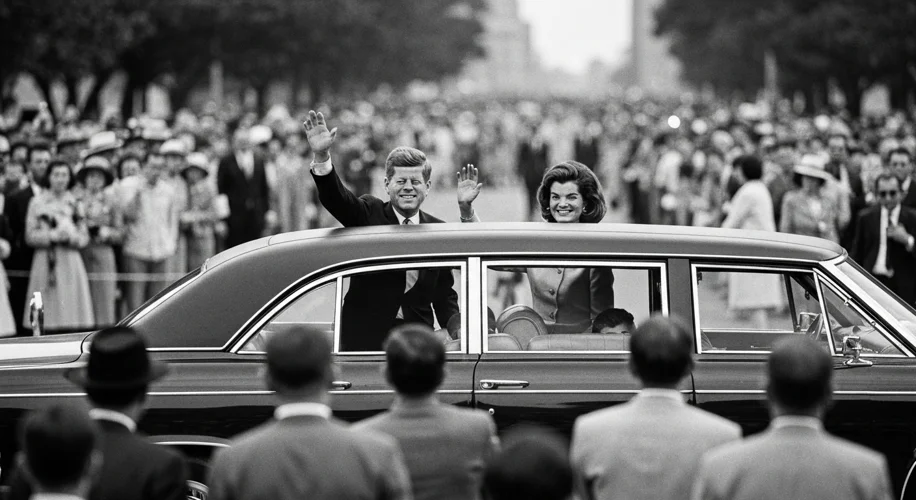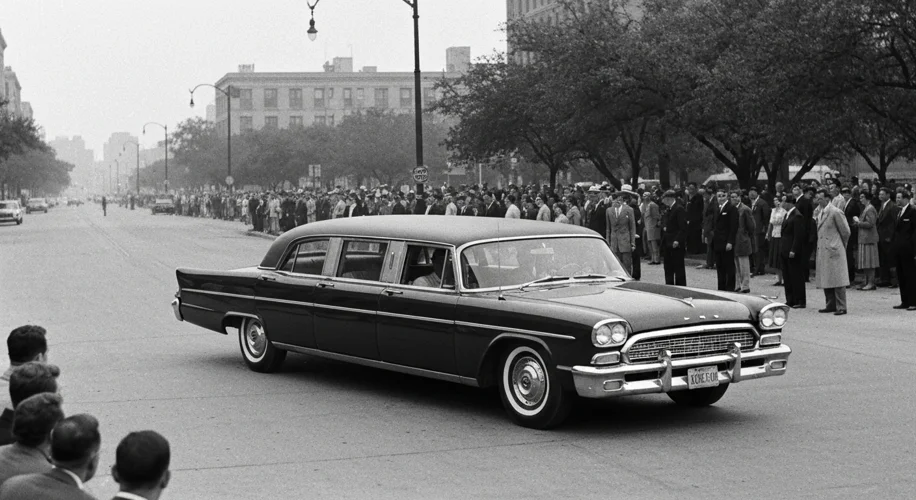The bright Texas sun beat down on Dallas on November 22, 1963, a day that began with optimism and ended in national grief. President John F. Kennedy, a charismatic figure who had captured the hearts of many Americans, was on a political trip to the Lone Star State. His motorcade, a symbol of his connection with the people, wound its way through Dealey Plaza, a scene of smiling crowds and waving hands.

But within moments, the joyous atmosphere shattered. As the presidential limousine turned onto Elm Street, a series of sharp cracks echoed through the plaza. Panic erupted. For those present, and for the nation watching on television, the image of the vibrant President suddenly slumping was a moment of profound shock and disbelief.
The events that unfolded in those critical minutes are etched into the American consciousness. The procession, intended to be a celebration of unity and progress, was violently interrupted. Within minutes, the President was rushed to Parkland Memorial Hospital, where, despite the desperate efforts of medical staff, he was pronounced dead.
In the aftermath, a palpable sense of confusion and dread settled over the nation. The immediate suspect, Lee Harvey Oswald, a former Marine with a complex past, was apprehended later that day in a movie theater. The swiftness of his capture did little to quell the surging tide of questions and speculation. Oswald himself, before he could stand trial, was shot and killed by Jack Ruby, a Dallas nightclub owner, on live television, adding another layer of gruesome drama to an already unfolding tragedy.
The Warren Commission, established to investigate the assassination, concluded in 1964 that Oswald acted alone. However, this official finding has been a lightning rod for debate and suspicion for decades. Various theories, ranging from a conspiracy involving the Mafia, the CIA, anti-Castro Cubans, or even elements within the U.S. government, have persisted, fueled by perceived inconsistencies in evidence and the lingering questions surrounding Oswald’s motives and connections.
The assassination of John F. Kennedy was more than just the death of a president; it was a seismic event that altered the trajectory of American history. It cast a long shadow of disillusionment and loss, shaking the public’s faith in the perceived invincibility of their leadership. The vibrant optimism of the early 1960s, so personified by Kennedy, was abruptly dimmed, replaced by a period of introspection and uncertainty. The event also spurred significant changes in presidential security protocols, forever altering how public figures move through the world.
Today, over six decades later, the assassination of JFK remains a potent historical enigma. The grassy knoll, the enigmatic Oswald, the unsolved questions – they all contribute to a narrative that continues to captivate and disturb. It serves as a stark reminder of the fragility of life, the unpredictable nature of history, and the enduring power of unanswered questions.

